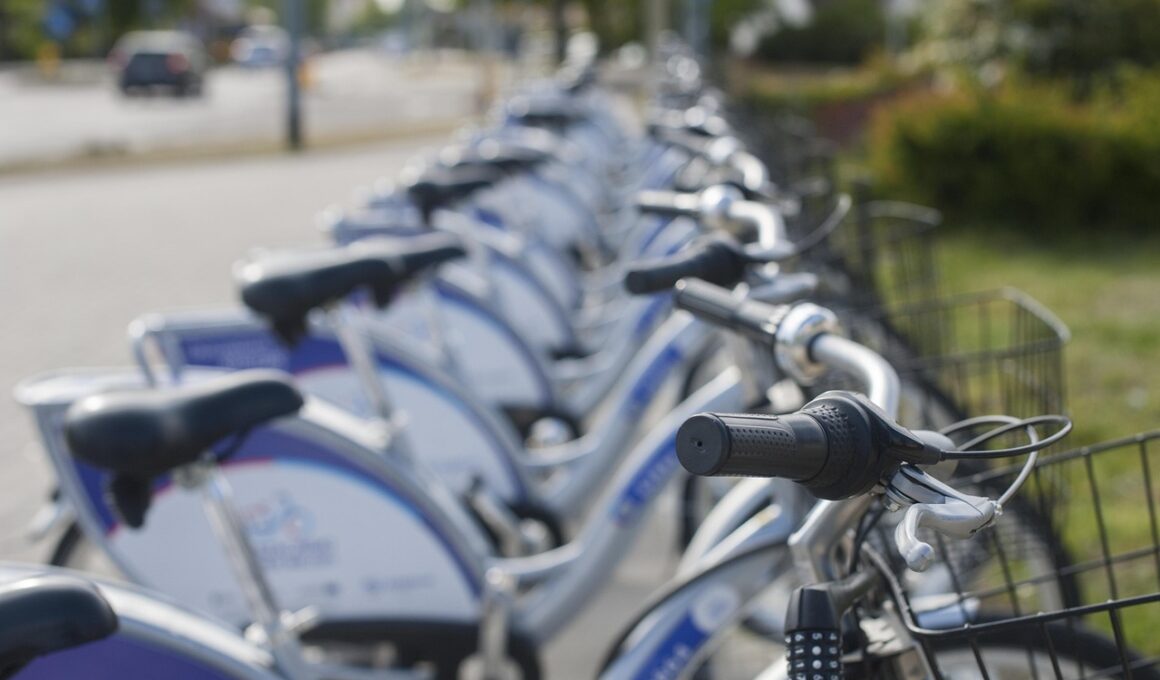How to Choose the Best Bike for Your Daily Commute
Selecting the right bike for your daily commute involves considering several factors. An ideal commuter bike should be comfortable, efficient, and practical for city riding. Begin by evaluating the type of commute you have, including distance, terrain, and frequency of use. Choose a bike that aligns with your commuting habits. If you’ll be riding longer distances, a road bike might be advantageous, whereas a hybrid bike is often perfect for shorter, mixed-terrain trips. Additionally, consider how much physical effort you’re willing to exert; if commuting uphill is part of your ride, opting for a bike with multiple gears can make your journey easier. Frame weight is another critical factor that influences the bike’s handling and speed. Lighter frames improve acceleration and ease of transport if you need to lift or carry your bike frequently. The bike’s geometry will also play a role, affecting your riding posture and comfort. Test ride a few models before making your decision to find the right fit and feel. A well-fitted bike ensures a better overall experience on your daily commute.
Components of a Good Commuter Bike
Once you’ve decided on the right type of bike for your commute, it’s essential to think about the components that come with it. Key elements include the bike’s tires, brakes, and gear system, all impacting your ride quality. Look for tires that are puncture-resistant, as this reduces the chances of delays due to flats. A good tire width can also enhance comfort and stability. Brakes are critical for safety, ensure you choose reliable options like disc brakes for better performance in any weather. The gear system should be user-friendly; internal hub gears can make shifting simpler, especially in stop-and-go traffic. Also, consider the handlebars and seat. Adjustable options provide more personalized comfort, which is vital for those longer rides. Additionally, fenders can protect you from splashes in wet conditions. Extra features such as integrated lights or a bell can enhance your riding experience while improving safety. Researching bike accessories like racks for carrying loads can also contribute to overall commuting efficiency during your journeys.
Budgeting for Your Commuter Bike
Budgeting is a vital aspect of selecting the perfect bike for daily commuting. Determine how much you’re willing to spend before you start your search, as this will help narrow down your options. Bicycles for commuting can range in price drastically, from entry-level models to high-end performance bikes. Be mindful that a higher price tag doesn’t always mean better quality; some affordable options provide excellent functionality and comfort. When considering your budget, factor in potential additional costs such as maintenance supplies, accessories, and safety gear. Investing in a good helmet is crucial for road safety, and you may also want a durable lock to secure your bike when parked. Look for local bike shops offering financing or discount opportunities to maximize your budget. Discounts on last year’s model can provide excellent value without sacrificing quality. Consider pre-owned bikes if you’re open to them; just ensure they are evaluated for condition. Don’t hesitate to ask for expert advice regarding durability and long-term performance from reliable shops before making a financial commitment.
Understanding Local Cycling Laws
Before you hit the road, it’s essential to brush up on your local cycling laws, as they can vary significantly from one area to another. Familiarizing yourself with these regulations not only aids in avoiding fines but also ensures a safer riding experience. Always wear a helmet, especially in regions with laws mandating their use for cyclists. Understanding your rights and responsibilities as a cyclist helps promote a positive relationship with motorists and other road users. Check if there are designated bike lanes or paths in your area; using these can improve safety and efficiency during your daily commute. Some places also have laws regarding the use of lights during nighttime riding, so ensure your bike is equipped accordingly. Moreover, respecting traffic signals and signals for cyclists can prevent accidents. Joining local cycling groups or communities can provide further insight into cycling laws and encourage safer practices. Plus, many of these groups engage in advocacy efforts that improve road conditions for cyclists in their neighborhoods. Awareness contributes not only to personal safety but also enhances the cycling culture in your community.
Maintenance Tips for Your Commuter Bike
Maintaining your commuter bike is essential for longevity and performance. Regular maintenance not only keeps your bike in good condition but can significantly enhance your overall riding experience. Start with routine checks of the air pressure in your tires, as properly inflated tires ensure a smoother ride and increased efficiency. Regularly inspect the brakes and gears, as these components can wear down over time. Lubricating the chain will prevent rust and improve shifts, making your commuting smoother. Make it a habit to clean your bike, especially after riding in wet or muddy conditions. A clean bike not only looks good but reduces corrosion risks. Check your bike’s frame and components for any signs of wear or damage. This includes tightening bolts regularly to ensure everything is secure. If you’re unsure about performing specific maintenance tasks, consider taking a basic bike maintenance class or enlisting the help of a local bike shop for minor repairs and tune-ups. Keeping your bike well-maintained will ultimately make your commuting experience more enjoyable and efficient.
Choosing the Right Gear for Commuting
The right gear can make a significant difference in your daily cycling experience. Start with comfortable clothing that won’t restrict movement; moisture-wicking fabrics can help manage sweat and keep you comfortable. Investing in high-visibility gear, such as brightly colored jackets or reflective strips, can enhance safety, particularly when riding in low-light conditions. Footwear is another aspect; choose shoes that provide adequate support while being suitable for cycling. If you anticipate cycling in adverse weather, consider purchasing waterproof gear to keep dry and maintain comfort. Cycling gloves can improve grip and reduce discomfort on longer rides, and weatherproof accessories enhance your overall experience. A good-quality backpack or messenger bag keeps your belongings organized and secure; look for models specifically designed for cyclists as they offer features that improve stability and fit. Carrying a water bottle is essential for staying hydrated, especially during longer commutes. Lastly, don’t forget about personal safety items such as a first aid kit and a multi-tool; having these can prove beneficial during unexpected breakdowns or minor injuries.
Finding the Right Community and Support
Connecting with a cycling community can greatly enhance your commuting experience. Engaging with fellow cyclists offers valuable insights and tips for navigating local routes. Many cities have organized cycling groups or clubs that host events and rides, providing an excellent opportunity to meet experienced cyclists. Online forums and social media groups are also excellent resources for receiving advice on bike maintenance, local laws, and route suggestions. Participating in community rides allows you to gain confidence and learn about new scenic routes that can make your daily commute more enjoyable. Advocating for more bike-friendly infrastructure is often a topic of discussion in these communities; becoming involved can positively impact your cycling experience overall. Look for local advocacy organizations that focus on improving conditions for cyclists in your area, as these groups frequently work toward enhancing safety and accessibility. Additionally, attending workshops or seminars organized by local bike shops helps you learn more and expand your knowledge of cycling. Building connections within the cycling community can foster friendships while making your commuting experience richer and more rewarding.
Recent Trends in Commuter Cycling
Staying updated with the latest trends in commuter cycling can enhance your experience and keep your commute enjoyable. Over recent years, there have been significant shifts in cycling technology, impacting how individuals choose their bikes and gear. E-bikes have gained popularity, offering an electric boost to cyclists, which makes longer commutes more accessible. Many urban communities are developing more cycling infrastructure, such as dedicated bike lanes, which fosters a safer riding environment. The rise of bike-sharing programs has also facilitated cycling for city dwellers; many now rely on these convenient services for short distances. Additionally, there has been a shift towards sustainability, with many opting for bikes as an eco-friendly alternative to cars. This growing trend emphasizes the importance of reducing carbon footprints while staying active. Also, more cyclists are integrating technology with biking; bike-mounted GPS devices and apps are becoming popular for tracking journeys. Keeping abreast of these trends can potentially improve your cycling experience while ensuring that you are participating in a growing movement toward healthier and eco-conscious commuting options.


